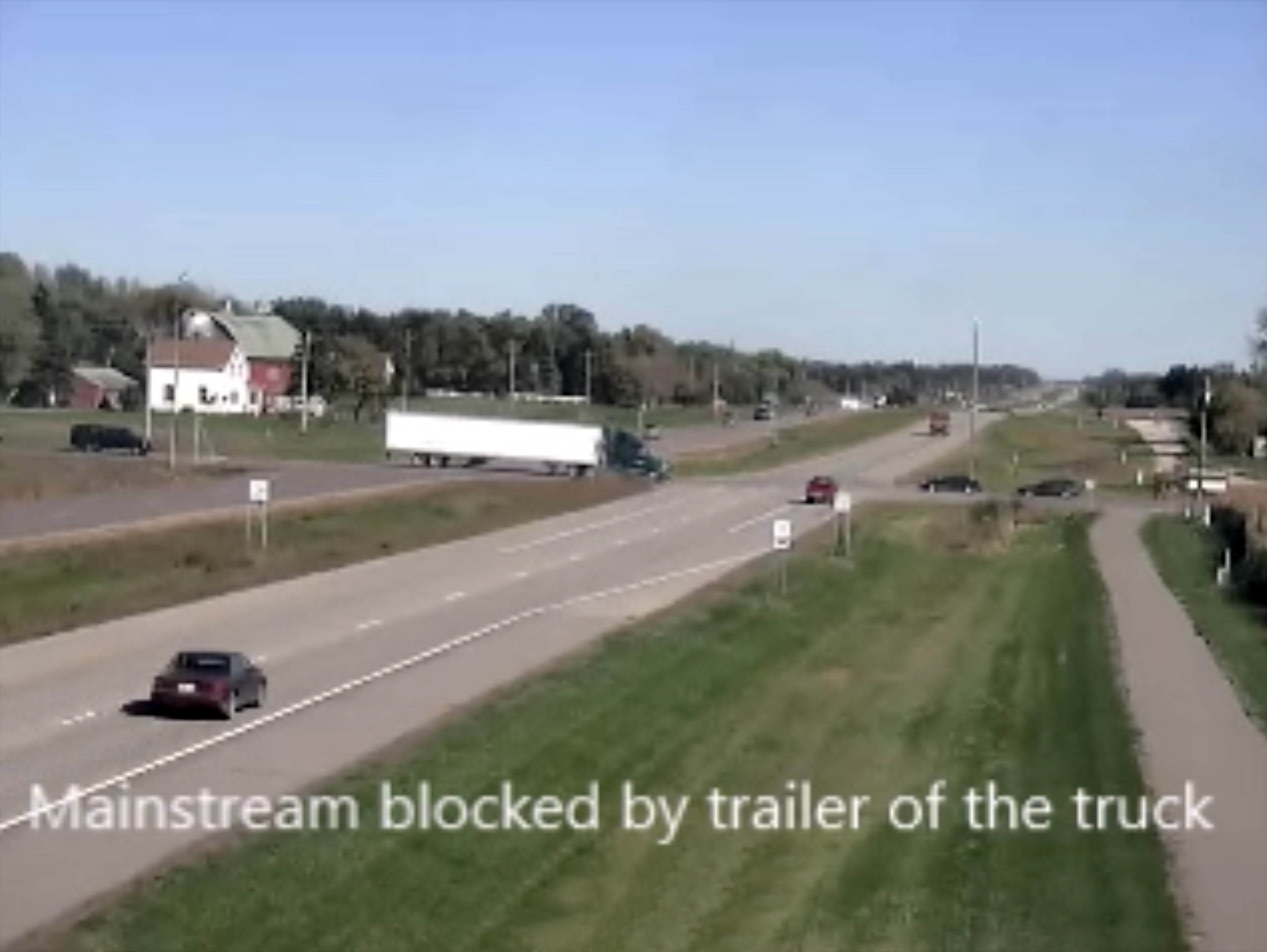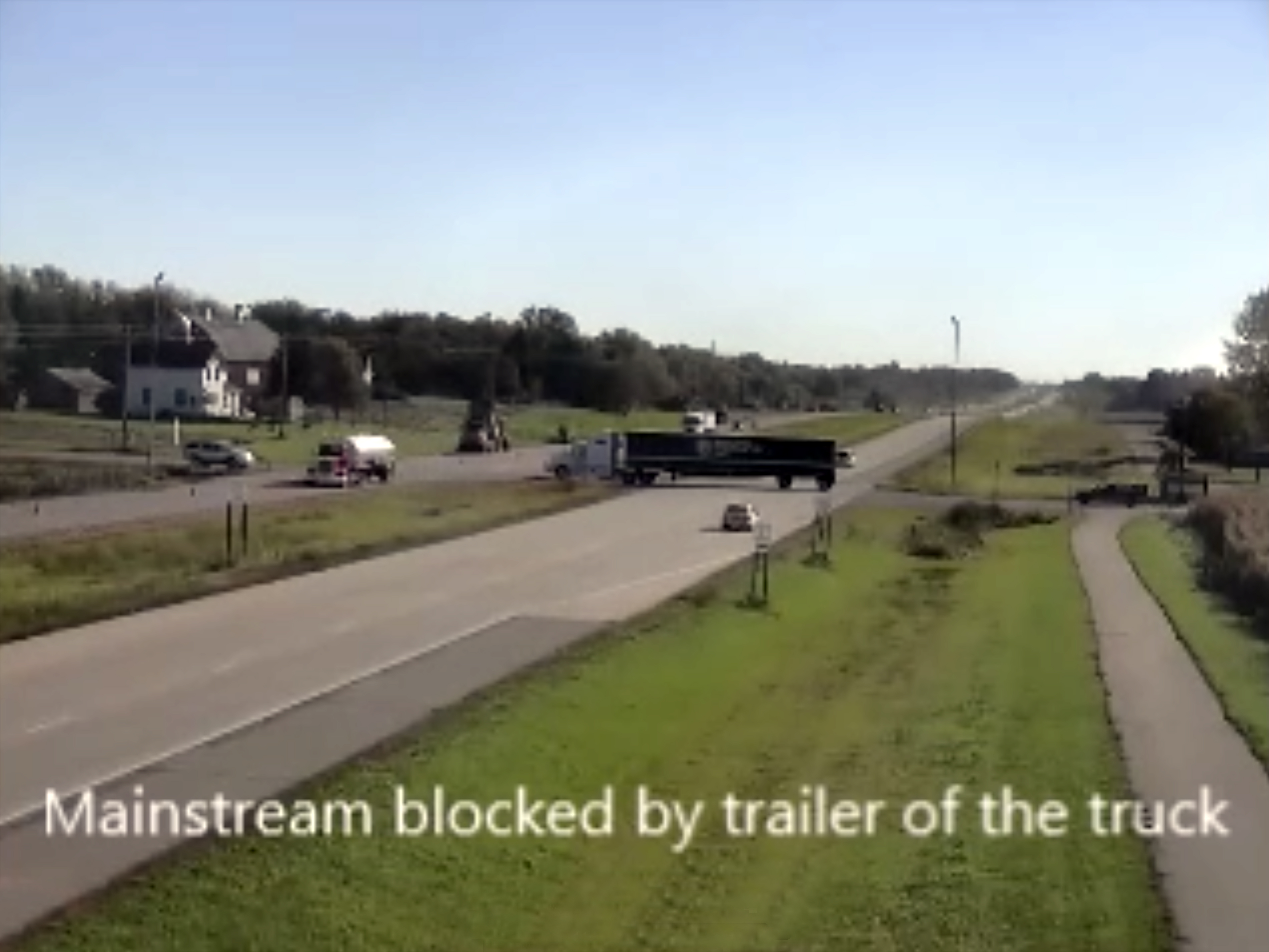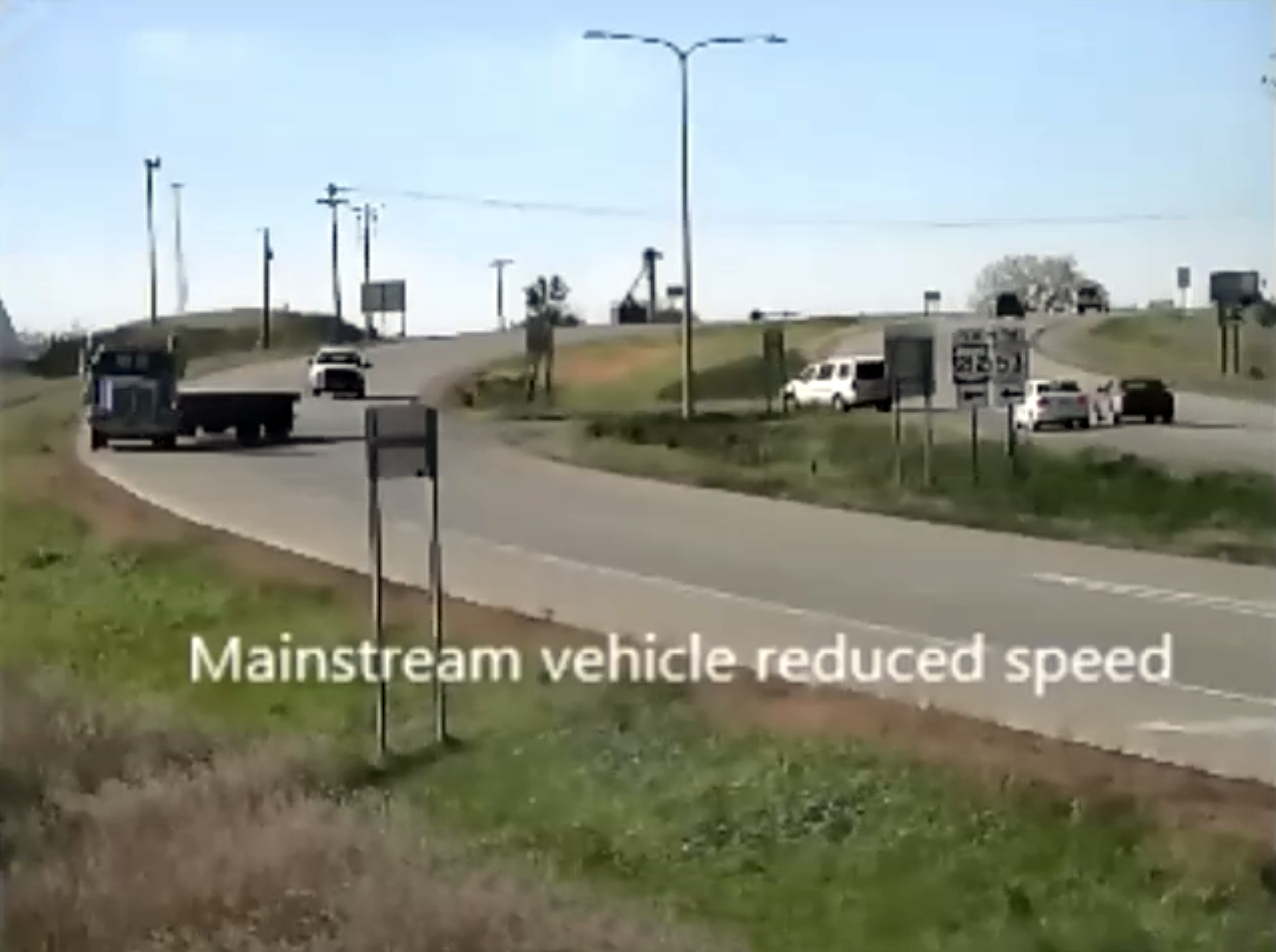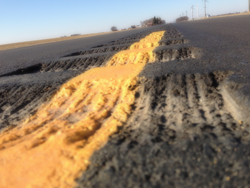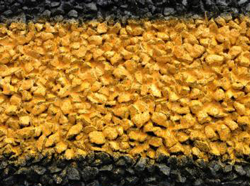Project Details
06/05/14
10/31/16
Minnesota Department of Transportation
Researchers
Yelda Turkan
About the research
This project captured best practices for producing and delivering road construction plans and documentation from several Minnesota cities and counties, industry, and several other state departments of transportation (DOTs). The findings will assist Minnesota city and county engineers in getting a better understanding of how and which types of plans, models, and other bid documents are used and delivered electronically in the construction industry, and how best practices can be employed in Minnesota cities and counties.
The project included an extensive literature review, phone interviews with experts, and a brainstorming session with super-users. The brainstorming session was held to help assess the recommendations reached through the study and determine how electronic plans, models, and other bid documents are viewed by the implementers in Minnesota cities and counties.
Based on the results of this work, guidance was developed for the implementation of 3D modeling and electronic document management (EDM) systems for the MnDOT Local Road Research Board (LRRB).
Project Details
06/23/14
08/31/16
Minnesota Department of Transportation
Researchers
Hyung Seok "David" Jeong
About the research
Many urban counties and cities in Minnesota spend more than 30% of their transportation project budgets for right-of-way (ROW) acquisition and it continues to become more expensive, difficult, and time consuming for project implementation. This project identified barriers and obstacles that occur during the ROW acquisition process that result in cost increases and delays and developed recommendations for change to improve the existing ROW acquisition process and practices.
The findings of this project were drawn from literature review, questionnaire survey and follow-up interviews, case studies, and a workshop.
In total, 22 barriers were identified under the categories of project delivery, agency’s internal capability, relationship with the public, appraisal and acquisition, and legislative and other issues. The root causes of those barriers were also analyzed, including uncooperative work environment, lack of tools and methods, distrust of property owners, and adverse effect of eminent domain law.
This project has developed 25 different recommendation ideas for change. Implementation of these ideas is anticipated to greatly enhance the ROW acquisition process, but strong leadership and support from top management to implement those ideas are required.
Researchers
Neal Hawkins
hawkins@iastate.edu email >Director Research Administration, ISU
About the research
In the US, some states have begun to address rural high-speed intersection crashes by physically restricting minor-road crossing movements (left and through turns) to simplify driver decision-making in terms of gap acceptance (the extent to which drivers will be able to utilize a gap in traffic of a particular size or duration). These treatments are referred to in Minnesota as reduced conflict intersections (RCIs).
Within Minnesota’s rural corridors, introduction of RCI design has been successful in preventing severe crashes; however, the unusual design has been met with some apprehension from operators of agricultural equipment and large trucks. This, in combination with a resistance to the unfamiliar, has created a desire for more information regarding RCI configuration safety impacts for these types of vehicles.
Even though RCIs eliminate right-angle crashes, which are the most severe crossing conflicts at rural high-speed intersections, concerns have been raised that, as large trucks are required to make U-turn maneuvers, they occupy the travel lanes for longer than would be required for a left-turn or through maneuver from the minor road, and, consequently, are exposed to on-coming high-speed vehicles for longer.
In response to these concerns, two different studies were conducted to evaluate large truck behavior at reduced conflict intersections. Both studies were sponsored by the Minnesota Department of Transportation Office of Traffic, Safety, and Technology.
Evaluation of Crashes at RCIs
Crash and traffic data were requested for known known RCI locations in six states: Maryland, Minnesota, Mississippi, Missouri, North Carolina, and Wisconsin. Crash data from four of those states (Maryland, Minnesota, Missouri, and Wisconsin) had the necessary data elements to conduct a simplistic before and after analysis. Crash data included characteristics such as location, type of vehicle, crash type, crash severity, and sequence of events. Crash data were requested for 300 ft around each intersection before installation of the RCI and from the intersection to 300 ft beyond the new U-turns.
Because data were limited, a simple before and after analysis was conducted for total crashes and truck crashes to evaluate the impact of installation of the RCIs. The majority of sites (13 of 15) experienced a decrease in total crashes per year with only one site experiencing an increase in crashes after installation of the RCI. Similarly, the majority of sites experienced a decrease in truck crashes (9 of the 15) with 2 sites having no change and 4 sites having a small increase.
One of the main goals of the research was to determine whether the frequency of truck crashes may have increased due to the added exposure of trucks in the oncoming lanes as they complete the U-turn. Truck crash patterns were evaluated for the periods before and after installation of the RCIs. The intent was to identify whether crashes were occurring that may have been a result of increased exposure of trucks in the on-coming travel lane.
Crash diagrams were examined to determine whether the crash may have been due to a conflict between the turning truck and another vehicle due to the intersection. Based on the limited data available, the evaluation suggested that installation of the RCI appears to have shifted crash patterns from the more severe right-angle crash to less severe rear-end and sideswipe crashes. Evaluation of truck crash patterns before and after installation of RCIs did not suggest increases in the type of crashes that would have appeared to result from increased truck exposure in the on-coming lanes as trucks completed a U-turn.
Evaluation of Truck Behavior at RCIs
This study collected and evaluated large vehicle operational behavior at a set of RCIs and at similar standard control intersections in Minnesota. The researchers collected data in 2015 using a portable video trailer array and metrics on truck turning movements at three RCI intersections in Minnesota and three similar non-RCI intersections, which were proximate to the RCI intersections. The researchers compared travel time, conflicts, and other metrics for this study.
The research team reduced video data and compared metrics between RCI and control intersections as noted below.
One of the main concerns expressed about RCIs is that large trucks/vehicles would take a significant amount of time to enter the traffic stream during U-turn maneuvers. This may result in large trucks/vehicles occupying the oncoming travel lanes for an increased period of time, which could lead to conflicts.
The researchers evaluated exposure time (when a vehicle occupies a non-travel lane while waiting for a gap or to complete a maneuver) for both RCI and control intersections. In all situations, large trucks were exposed for significantly less time during the U-turn than during a left or through maneuver at a control intersection.
The researchers also compared evasive maneuvers (situations where an on-coming vehicle has to brake, slow, or change lanes to avoid the large vehicle crossing the intersection). Evasive maneuvers during U-turn maneuvers at RCIs were of the most concern. The average number of evasive maneuvers created by large vehicles at the RCI U-turn locations was half as many as the average at the control intersections.
This study found no evidence that validated concerns expressed about large vehicle operation at RCIs. Exposure time was not increased at the U-turn locations and evasive maneuvers were lower than at control locations.
Researchers
Neal Hawkins
hawkins@iastate.edu email >Director Research Administration, ISU
Paul Carlson
About the research
This research effort provided the Minnesota Department of Transportation (MnDOT) with field data on the performance of pavement marking materials when used as rumble stripes on MnDOT roadways. These field efforts provide a perspective on the impact that both wear and winter maintenance practices have on retroreflectivity.
Given that these markings were installed by a variety of MnDOT contractors and at different times and roadways, this report also serves to document the range of retroreflectivity provided to drivers at any given time on similar two-lane MnDOT roadways under the installation practice guidelines at the time of installation (2012 to 2013). More specifically, these measurements consider the difference in retroreflectivity provided by direction of travel (e.g., for the same marking, what is the retroreflectivity while driving northbound versus southbound?) and by roadway.
The long-term evaluation collected field measurements both initially and after two winters (18 months) for centerline rumble stripes only and on seven segments over three different roadways.
The in-service evaluation included new centerline and profile rumble stripes, all of which were installed as part of the 2013 mill and overlay projects on bituminous surfaces and included adding new rumbles and rumble stripes within District 4 on two-lane MnDOT roadways. The retroreflectivity data were collected one winter (approximately 12 months) after installation with no initial measurement data being available. This effort included measuring the centerline rumble stripe performance over eight segments on four different roadways and the profile rumble stripe performance over 18 segments on 10 different roadways.
A comparison of the initial (2012) versus long-term (2014) retroreflectivity measurements yielded the following observations:
· The amount of retroreflectivity provided by direction of travel for the same centerline marking varied considerably. This variation is a result of rumble stripE installation practices and, more specifically, bead distribution and embedment.
· A comparison of retroreflectivity after 18 months showed considerable variation among the three roadways measured.
The in-service evaluation included new centerline and profile rumble stripes, all of which were installed as part of the 2013 mill and overlay projects on bituminous surfacesand included adding new rumbles and rumble stripes, within District 4, on two-lane MnDOT roadways.
· The amount of retroreflectivity provided by direction of travel for the same centerline marking varied considerably for both the centerline and the profile marking. It is especially critical for the centerline marking to be consistent in providing similar retroreflectivity regardless of the direction traveled.
· Retroreflectivity, 12 months after installation, was found to vary considerably between the different roadways measured for both yellow centerline markings and white profile markings.
· Overall, after one season of service, nine of the 14 roadways had more than 90 percent of their retroreflectivity readings measuring in excess of the arbitrary benchmark that was set for performance.
Researchers
Neal Hawkins
hawkins@iastate.edu email >Director Research Administration, ISU
About the research
The objective of this research was to conduct a field trial to evaluate the marking performance of different combinations of pavement marking materials and installation practices on challenging surfaces. The trial included a range of pavement marking products over varied roadway characteristics to assess the performance of different marking materials over different challenging surfaces by product, thickness, bead package, and whether or not a primer was applied.
The research team worked with the technical advisory panel (TAP) to document pavement marking performance on several municipal roadways within the City of Eden Prairie and to organize and prepare for field testing of different marking materials on both a seal coat and micro surface roadway. These projects provide pavement marking performance on challenging surfaces information over different conditions (traffic levels and line types) apart from the MnDOT research test deck scenarios.
These results provide MnDOT with a basis to consider pavement marking striping practices on challenging surfaces in terms of performance and cost. The high-build materials (primer plus VISILOK) and epoxies showed similar performance, which provides a good basis for material selection.
Researchers
About the research
A number of factors have been noted in the research as contributing to work-zone crashes. Driver factors have not been as well studied since they are difficult to determine from crash data, but it is largely believed that the main contributors are inattentive driving, speeding, and other unsafe driver behaviors, such as following too closely.
A number of countermeasures have been utilized by agencies to get drivers’ attention and encourage safe work-zone driving. However, the information is limited about which countermeasures are the most effective, given that driver behavior in work zones is not well understood.
The naturalistic driving study (NDS) data collected by the Second Strategic Highway Program (SHRP2) offers a rare opportunity for a first-hand view of work-zone safety-critical events. Using these data, actual driver behavior can be observed. Additionally, using forward roadway views, researchers can make a determination as to whether the events were actually work zone related.
The goal of this research is to more fully investigate work-zone safety using the unique data available with the SHRP2 data. In particular, the analyses address the role of speed and distraction in work-zone crashes and near crashes.
The goal is to determine how drivers negotiate work zones and determine the factors present when safety-critical situations arise as compared to normal work-zone driving. Results from earlier work suggest that the impact of speed, driver distraction, work-zone configuration, and roadway characteristics can successfully be included in the analyses.
Funding Sources:
Midwest Transportation Center
USDOT/OST-R ($50,000.00)
Total: $50,000.00
Contract Number: DTRT13-G-UTC37
Researchers
Başak Aldemir Bektaş
About the research
The objectives of this research were twofold. The first objective was to identify the needs for the inspection methodology, manuals, training, and the timetable needed for all bridge owners to start collecting element level bridge inspection data. The second objective was to identify how to incorporate this new inspection methodology into the rich reporting tools and performance measures that the Minnesota Department of Transportation (MnDOT) uses for determining the bridge projects in the annual program.
Working with the MnDOT Bridge Office, the research team identified the necessary changes to the bridge inspection elements that would both ensure MnDOT conforms to the new American Association of State Highway and Transportation Officials (AASHTO) Guide Manual for Bridge Element Inspection and provide the necessary data for the agency’s bridge management process. The changes needed for MnDOT’s Bridge Replacement and Improvement Management (BRIM) were also identified working with the MnDOT Bridge Office.
Researchers
About the research
The primary objective of this work is to provide formal guidance to county engineers throughout Minnesota for repairing timber bridge components. The benefit of having such a resource will be measured by improving the overall condition of the transportation system and reducing system failures through implementation by local officials.
As is often the case, funds required to complete repairs are limited and, as a result, any method used must not only be structurally feasible but also economically feasible. This report provides bridge owners and caretakers several routine maintenance and repair options aimed to meet the goals of simplicity and affordability.
The economic impact of repairing timber bridges was assessed for multiple scenarios: a comparison was made between the net present value of repair at varying repair costs over time and the net present value of varying reconstruction costs over time. Through this exercise, for each scenario, a point in time was identified when repair or reconstruction makes most economic sense.
An additional assessment of overall costs (direct plus indirect) was completed, which included the increased user costs due to bridge posting or closure. This assessment made clear that when indirect costs are included, the benefits of maintaining or repairing a bridge to prevent posting or closure become great.
A standalone manual, Cost-Effective Timber Bridge Repairs: Manual for Repairs of Timber Bridges in Minnesota, was also developed for this project.
Project Details
06/01/13
06/30/17
Minnesota Department of Transportation
Researchers
Eshan Dave
About the research
Asphalt mixtures are commonly specified using volumetric controls in combination with aggregate gradation limits, like most transportation agencies, MnDOT also uses this approach. Since 2010 onward, several asphalt paving projects for MnDOT have been constructed using coarser asphalt mixtures that are manufactured with lower total asphalt binder contents. Due to the severe cold climate conditions in Minnesota, there are concerns of premature cracking and inferior durability in asphalt mixtures with lower asphalt binder contents. This research project evaluated 13 low asphalt binder content mixes from 10 actual field projects to determine whether there is potential for poor cracking performance and high permeability. Assessment of field performance indicated an average of 7.75 years of life until 100% transverse cracking level is reached. The pavement structure played a significant factor in controlling the cracking rates. Thin overlays showed almost ten times inferior transverse cracking performance as compared to asphalt wearing courses on full-depth reclamation. Asphalt mixture volumetric factors did not show a statistically significant effect on cracking rates; however, the asphalt binder grade did show a strong effect. Eight out of the 13 coarse asphalt mixtures evaluated in this study have higher permeability than the typical dense graded asphalt mixtures. Performance evaluations using lab measured properties predicted poor thermal cracking performances. No discernible trends were observed between measured or predicted cracking performance and mix volumetric measures. Use of performance tests based on specifications for design and acceptance purposes is reinforced through this study.
Researchers
Charles Jahren
About the research
Minnesota’s local highway agencies are tasked with maintaining their low-volume road networks with available financial resources, prompting increased interest in lower-cost pavement rehabilitation alternatives. In-place cold recycling technologies, such as cold in-place recycling (CIR) and full-depth reclamation (FDR), provide lower-cost opportunities to renew deteriorated roads than traditional rehabilitation methods, particularly if surfaced with a thin surface treatment such as a chip seal (seal coat) or microsurfacing rather than hot-mix asphalt. However, the resulting road surface may not meet some road users’ expectations.
This study investigated the performance and economics of four pavement rehabilitation alternatives involving recycling technologies. The alternatives included CIR and FDR treatments with either an asphalt overlay or thin surface treatment. Fifteen case study sections in Minnesota and neighboring states were selected for performance evaluation and lifecycle cost analysis (LCCA).
Pavement condition surveys were performed to evaluate the study sections’ pavement distresses and roughness. The results indicated satisfactory performance for fourteen sections, while a CIR section with a chip seal surface using quartzite as cover aggregate had extensive transverse cracking. The cause of the distress is not clear.
The LCCA results indicate a 14% to 42% lower lifecycle cost for CIR and FDR treatments with chip seal surfaces. Costs savings may be achieved if asphalt overlay thicknesses are reduced, though chip seal surfaces may be rougher and nosier and require more maintenance than asphalt overlays. A decision tree was developed to aid local agencies during the treatment selection process.
